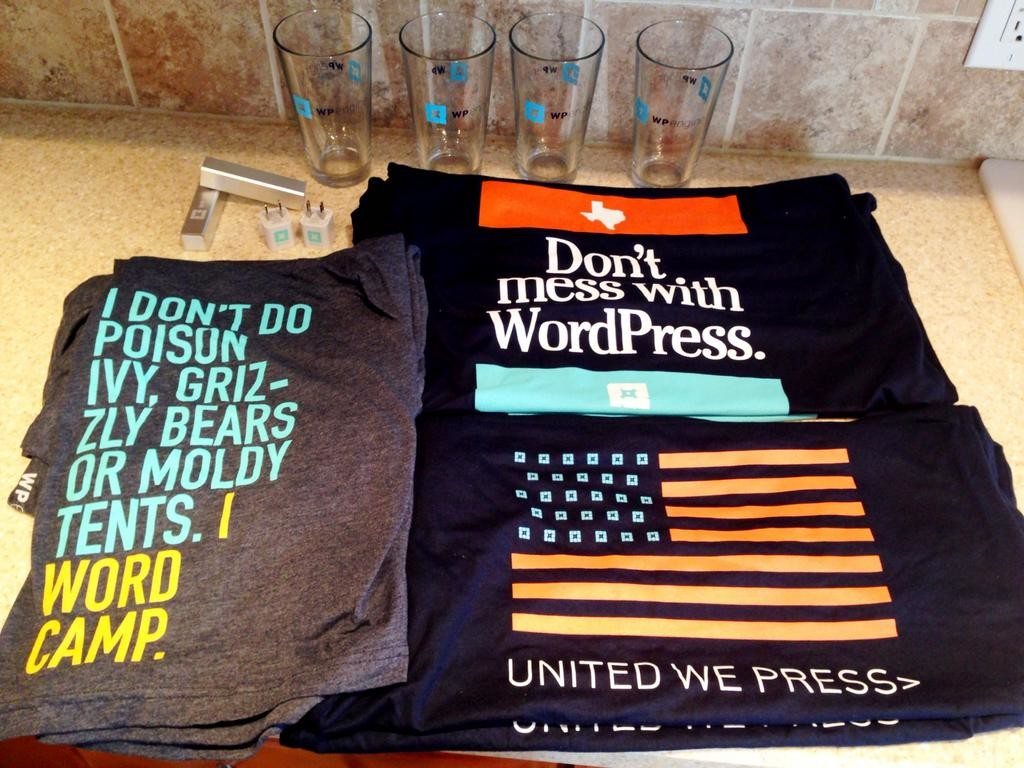I don’t mean “uniform” as in “identical.” (Although, that’s not a bad definition of culture: The attributes that we all share.)
I mean “uniform” as in, “Wearing the same clothes, thereby reducing individuality.”
We have a swag culture at WP Engine, particularly in T-shirts. Because we have a phenomenal Artistic Director (Seth), folks actually want to wear our shirts:
After bad morning, I received an overly generous box of swag from WP Engine. Day: made. Thanks @shaptora @asmartbear pic.twitter.com/ipAUbBU1DA
— Ryan Duff (@ryancduff) October 30, 2014
Requiring school uniforms has been a subject of debate in America for decades; today 20% of public schools require uniforms. Many Americans find this repugnant because it mutes personal expression, reinforcing the notion that people are fungible factory workers instead of creative individuals, and implies your personal choices are unimportant or unvalued. Banksy says, “The creative adult is the child who survived.” Uniforms are yet another way in which we kill creative children.
Surveys of students in those schools, however, reveal that more than half are thankful to have the uniforms, for a variety of reasons, and say it doesn’t unduly hamper their personal expression.
Indeed there are benefits from wearing uniforms that Americans ought to prize. For example, uniforms attack the concept of “class” — you cannot tell from visual inspection how much money you have, what family you came from, or where you were born. You have to judge the person, not their appearance.
Applied to a corporate context, those same benefits accrue, and more: You can’t immediately know someone’s title, status, intelligence, or seniority.
I see those benefits manifest every day at WP Engine. Most of us wear swag more often than not. It would be bad if that were required — then we’re truly killing individuality — but because folks choose to do so, the immediate benefit is that it promotes the fact that everyone is part of the same team, regardless of title or department or age.
It shows in the little things. A few Mondays ago, a group of ten new hires were filtering into the office, dazed and clambering about their new environment, preparing for their first few days of orientation. As I walked into the office, I held the door open for a few of them, and a guy who has been with the company for three years. As the newbies nervously rushed without acknowledgement, the oldie smiled at me and said, “Those folks don’t even realize that The Founder Of The Company just held the door open for them.”
Exactly, and that’s good. Should we treat each other better or worse because of a title? Should we always feel comfortable arguing for our opinion or feel like that’s not acceptable because of a traditional equating of seniority and wisdom?
As for the argument that maybe uniforms encourage conformity, one look at our company shows exactly the opposite. Because we know what dimensions we are identical on (i.e. our culture), we don’t select for things like gender or sexual orientation or religion, and that’s clearly manifested in our roster. I’m not sure how many other companies have women for 2/3rds of C-level executives, 50% of VPs and nearly 50% of Directors, and I could go down the line on other dimensions as well.
Perhaps by unifying us on what really matters, instead of superficialities, we’re even more likely to allow the other variables of humanity to range wide and free, and yet end up with a stronger, more unified team of diverse individuals.
It just goes to show that Seth’s amazing designs aren’t mere fancy decoration for a brand. Because the shirts are compelling, we wear them constantly, and because wear them constantly, our culture is strengthened without muting our individually.
Pretty powerful stuff for a cotton tee!

Cool T’s!! I’m an XL, btw. 😉